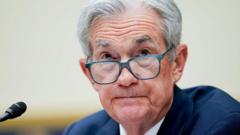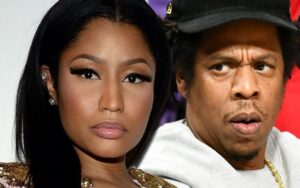In a troubling development, the Hong Kong Zoological and Botanical Gardens has seen the sudden death of nine monkeys, including members of a critically endangered species, prompting a partial closure for investigation.
Hong Kong Zoo Faces Crisis After Sudden Monkey Deaths

Hong Kong Zoo Faces Crisis After Sudden Monkey Deaths
Officials close part of the zoo to investigate the mysterious deaths of nine monkeys, raising concerns over endangered species.
The Hong Kong Zoological and Botanical Gardens has been partially closed following the sudden deaths of nine monkeys over the span of two days. Eight of the monkeys were discovered dead on Sunday, while another succumbed on Monday, according to a statement by the Hong Kong’s Leisure and Cultural Services Department, which oversees the zoo. Of particular concern is the fact that three of the deceased were cotton-top tamarins, a species classified as critically endangered.
John Lee, the leader of Hong Kong, addressed the media, stating that toxicology tests and autopsies are underway to determine the cause of the fatality cluster. "It's crucial to identify and contain the problem to prevent any further spread," Lee emphasized in his weekly news conference.
Siddharth Sridhar, a clinical assistant professor at the University of Hong Kong’s department of microbiology, described the situation as an "unusual cluster of deaths" among captive animals. He suggested that the investigation might focus on potential infectious agents or toxins as possible culprits.
In response to the tragedy, the zoo, which has been a Hong Kong staple since 1871 and spans around 14 acres in the city’s Mid-Levels district, initiated a comprehensive monitoring of all its animals starting Sunday. The mammals section was closed for a thorough cleaning and disinfection on Monday. Hong Kong’s tourism bureau has convened an urgent interdepartmental meeting to strategize on next steps.
On Sunday, zoo staff noticed irregular behavior and appetite in two additional monkeys. These two were removed from their enclosures for observation; sadly, one died by Monday morning, while the other, a De Brazza’s monkey, remains under care.
Among the victims, besides the critically endangered cotton-top tamarins, were four white-faced sakis, one De Brazza’s monkey, and one common squirrel monkey. The facility houses a diverse collection of 158 birds, 93 mammals, and 21 reptiles.
The loss raises critical concerns over the welfare and conservation efforts for endangered species residing at the zoo, as officials work to unravel the mystery behind this alarming incident.
John Lee, the leader of Hong Kong, addressed the media, stating that toxicology tests and autopsies are underway to determine the cause of the fatality cluster. "It's crucial to identify and contain the problem to prevent any further spread," Lee emphasized in his weekly news conference.
Siddharth Sridhar, a clinical assistant professor at the University of Hong Kong’s department of microbiology, described the situation as an "unusual cluster of deaths" among captive animals. He suggested that the investigation might focus on potential infectious agents or toxins as possible culprits.
In response to the tragedy, the zoo, which has been a Hong Kong staple since 1871 and spans around 14 acres in the city’s Mid-Levels district, initiated a comprehensive monitoring of all its animals starting Sunday. The mammals section was closed for a thorough cleaning and disinfection on Monday. Hong Kong’s tourism bureau has convened an urgent interdepartmental meeting to strategize on next steps.
On Sunday, zoo staff noticed irregular behavior and appetite in two additional monkeys. These two were removed from their enclosures for observation; sadly, one died by Monday morning, while the other, a De Brazza’s monkey, remains under care.
Among the victims, besides the critically endangered cotton-top tamarins, were four white-faced sakis, one De Brazza’s monkey, and one common squirrel monkey. The facility houses a diverse collection of 158 birds, 93 mammals, and 21 reptiles.
The loss raises critical concerns over the welfare and conservation efforts for endangered species residing at the zoo, as officials work to unravel the mystery behind this alarming incident.




















